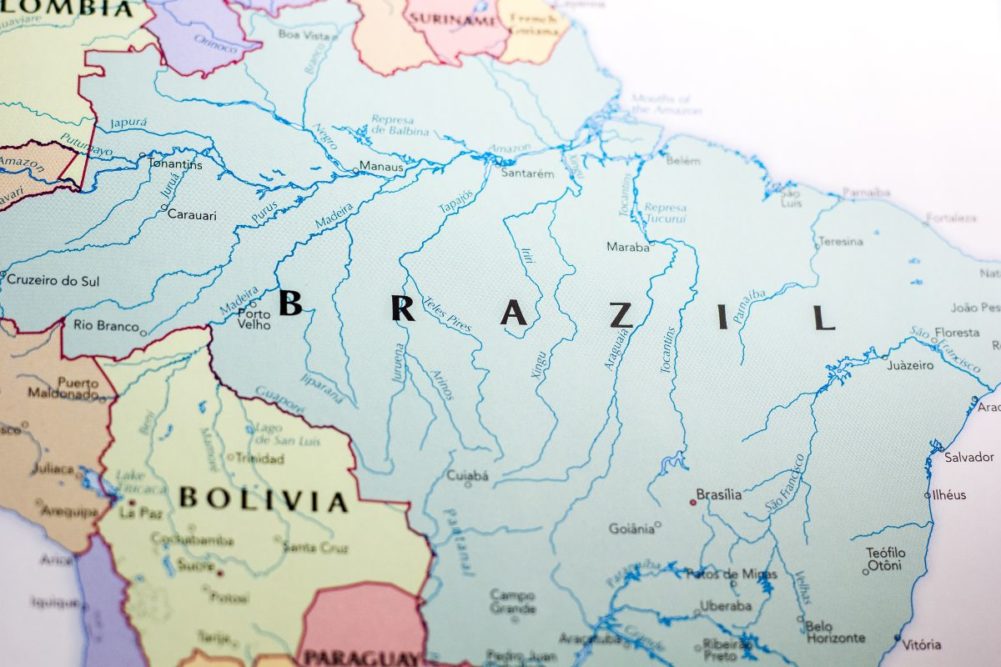KANSAS CITY, MISSOURI, US — The drought in Brazil continues to make headlines. The situation can be quite misleading, and it is important for those who have an agricultural interest in Brazil to keep it all in the right perspective.
First and foremost, the drought is, by far, more severe in the Amazon River Basin than it is in any of the key corn, soybean, rice, coffee, cocoa, citrus or sugar cane areas. With that said, though, it is time for seasonal rains to evolve, and if they are significantly late or reduced relative to normal the potential for Brazil to have smaller crops becomes increasingly great.
Brazil does have a definite wet and dry season. The wet season begins in late October and lasts through March and sometimes into early or mid-April. The rain season provides most of Brazil’s key agricultural areas with the necessary moisture to produce all kinds of crops. In a “normal” year, Brazil gets much more rain than it needs. In a lighter-than-usual rainfall year, water supply and deep subsoil moisture can decrease, but as long as the rainfall is timely the results still may be very good for crop production. Last year (2023-24) was a great example of how lighter-than-usual rain can still generate a good-size crop of corn and soybeans as well as sugar cane, coffee, citrus and other crops. Rainfall was far enough below average in some areas over the past year to place the water supply situation in danger, but the timely rainfall that occurred has ensured abundant grain and oilseeds for the demand.
Drought in the Amazon River Basin is a concern because, like North America’s Mississippi River, when the river runs low on water, barge restrictions are put in place, and that cuts into deliveries of harvested crop and the transportation of goods and services. The Amazon River gets its water from the rain forests that surround the river, and without abundant rainfall the runoff is poor and the river suffers from low water levels. The past two years have been unusually light on rainfall and temperatures have been quite warm resulting in strong evaporation and drier atmospheric conditions
Monsoonal rainfall in Brazil is designed to bring Brazil some much needed rainfall to the south of the Amazon Basin during the summer. When rainfall is notably below average in the basin the relative humidity tends to be very low as well, and that reduces the potential for heavy and frequent rainfall, especially since atmospheric warming has reduced the necessary temperature contrasts in the air to condense moisture out as rain. Each of these issues is involved with the drought in Brazil.
Last summer, however, Brazil produced a good-size corn and soybean crop and production of coffee, sugar cane and citrus were all fair-size as well. That was a byproduct of a limited number of hot days and timely rain events. Such conditions often are found in the US Midwest and Brazil, which usually serves the agricultural industry well with abundant production even though water supply and deep subsoil moisture are lighter than usual.
The longer the below-normal rainfall lasts the more serious drought status can become. At the same time, though, crop production can continue to do well as long as timely rainfall and seasonable temperatures prevail. Once temperatures become persistently warm or hot and rainfall continues below normal while long-term water supply and subsoil moisture are below normal the potential for a more negative production year for any one of the nation’s crops or all of them becomes increasingly great.
Outside of the Amazon River Basin dryness is normal from late April through August and into early September. Rainfall during that period is rarely enough to counter evaporation and it is “normal” for the ground to be too dry for planting. Timely showers usually begin in the second half of September in a good year for Brazil’s center west crop area including Mato Grosso, Mato Grosso do Sul and Goias, where early season soybeans usually are first being planted. If the Amazon River Basin is going to continue to experience delayed seasonal rainfall, then so will the center west soybean production areas. In most years, scattered showers begin in early October and steadily increase so that “normal” rainfall is occurring in late October and November, at which time the bulk of corn and soybean planting usually takes place.
This year’s arrival of the rainy season is expected to be very similar to that described above. Late September rainfall will be minimal, but conditions should begin improving in October. A big delay in the start of planting like that of a couple of years ago is not likely even though talk about drought in the Amazon River Basin is bound to continue and the water shortages on the river system will continue. For summer grain and oilseed production, though, the odds are very good that enough rain will fall in a timely manner to get the 2024-25 crops off to a good start after and little sputtering on erratic, often lighter-than-usual, rain.
In the meantime, World Weather, Inc. expects a favorable year of weather for Argentina. There will be bouts of rain and dry weather, but neither will occur in such dominance to seriously threaten production.
Drew Lerner is senior agricultural meteorologist with World Weather, Inc. He may be reached at worldweather@bizkc.rr.com. World Weather, Inc. forecasts and comments pertaining to present, past and future weather conditions included in this report constitute the corporation’s judgment as of the date of this report and are subject to change without notice.






